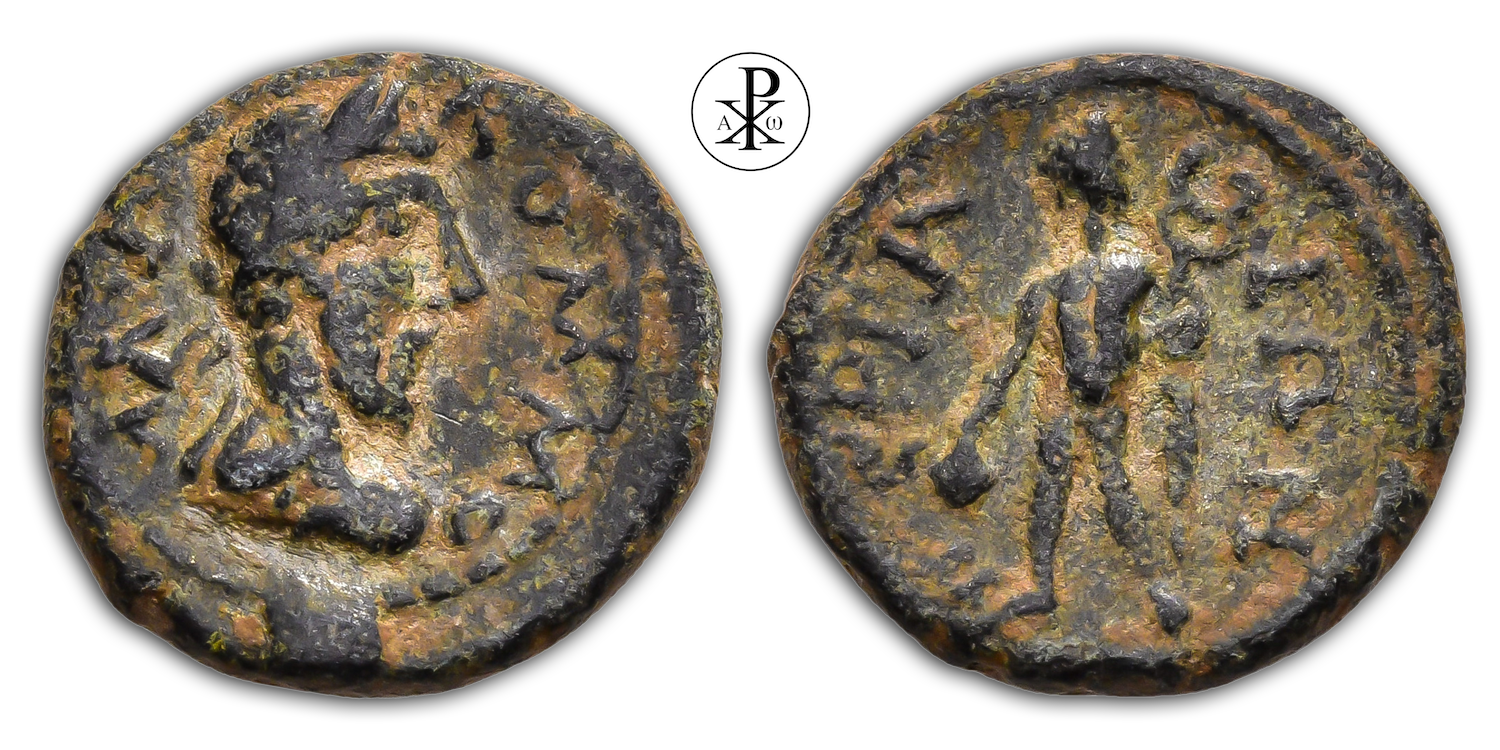Imperator Caesar Marcus Aurelius Commodus Antoninus Augustus
Reign: Commodus
Mint: Perge, Pamphylia
Date: 180/192 AD
Nominal: Bronze
Material: AE
Diameter: 14mm
Weight: 2.44g
Reference: RPC IV.3 25018 (this coin)
Reference: SNG Copenhagen 31 321, van Lennep 1898
RPC Online: https://rpc.ashmus.ox.ac.uk/coins/4/25018
Rare: Specimens 2 (1 in the core collections)
Provenance: Olympus Numismatik Löhne, Germany (Auction 3, Lot 487)
Pedigree: –
Special: 2nd known example, RPC Online Plate coin
Obverse: Laureate bust of Commodus wearing cuirass and paludamentum (?), right
Inscription: Μ ΑΥΡ ΚΟΜΜΟ
Translation: Marcos Aurelios Kommodos
Translation: Marcus Aurelius Commodus
Reverse: Hermes standing facing, head right, holding purse and caduceus
Inscription: ΠƐΡΓΑΙΩΝ
Translation: Pergaion
Translation: City of Perge
Comment: Perge is an ancient city 14 kilometres inland from the south coast of Turkey and 16 kilometres northeast of Antalya (ancient Attaleia) in Aksu. Along with Side, it was the most important city in Pamphylia. The ruins still standing today give a good impression of a city complex of the late Hellenistic-Roman period. Coming from the coast or from Antalya, the ancient theatre of Perge is located to the west (left). It had a capacity of 14,000 spectators, making it one of the largest of its kind. Between the theatre and the city is a large, well-preserved stadium with 15,000 seats and 50 vaults supporting the still well-preserved rows of seats. Some of them served as shops, every third one as an entrance. Towards the city, there are palace ruins from the imperial period and the large Palaestra, which is part of a large gymnasium. At the west gate are the thermal baths – an aqueduct can also be seen – and behind them the necropolis. The strategically located table mountain in the north has been called the Acropolis since the work of Karl Graf Lanckoronski (1890), because the main street of the city runs right up to it. On the south-eastern edge of the Acropolis was the extensive sanctuary of Artemis (known as Artemis Pergaia), whose cult – as in Ephesus – shaped the arts and the economy.
In Greek mythology, Hermes is the patron god of traffic, travellers, merchants and shepherds; on the other hand, he is also the god of thieves, art dealers, rhetoric, gymnastics and thus also of palaestra and magic. As messenger of the gods, he proclaims Zeus’ decisions and leads the souls of the deceased to Hades (the underworld). He is one of the twelve great Olympic gods. Hermes is one of the gods whose cult can be traced back the furthest. According to mythology, he is the messenger of the gods who delivers the message of the gods to mortals and also translates them. His messages are thus not mere communications, but demand insight and understanding. This is why the science of “explaining and understanding” is also called hermeneutics. Hermes, the messenger of the gods, can move faster than light. This is made possible by small wings, two of which are on each of his boots. Before Hermes was born, Iris was a messenger of the gods. Hermes, like other ancient gods (Mithras, Horus/Anubis), was also a pastoral god. Thus he had both mundane and metaphysical tasks: As messenger of Zeus, he was the ultimate lawgiver and highest worldly authority; as psychopompos (“soul guide”), he protected the souls of the deceased on their way to the court of the dead. Among the Greeks, Hermes was usually depicted youthful and beardless, with a broad-brimmed hat, later a winged helmet, winged shoes or winged shoulders and the magically powerful golden staff of Hermes (Latin caduceus). With this Hermes can put people to sleep and cause dreams; the staff is one of his attributes. Next to the staff, which is entwined with two snakes looking at each other, he usually holds a purse in Roman depictions.
There seems to have been a distinct and popular cult of Hermes in Perge, with numerous statues and other artefacts found throughout the ancient city: Hermes1 – Hermes2 – Hermes3 – Hermes4
